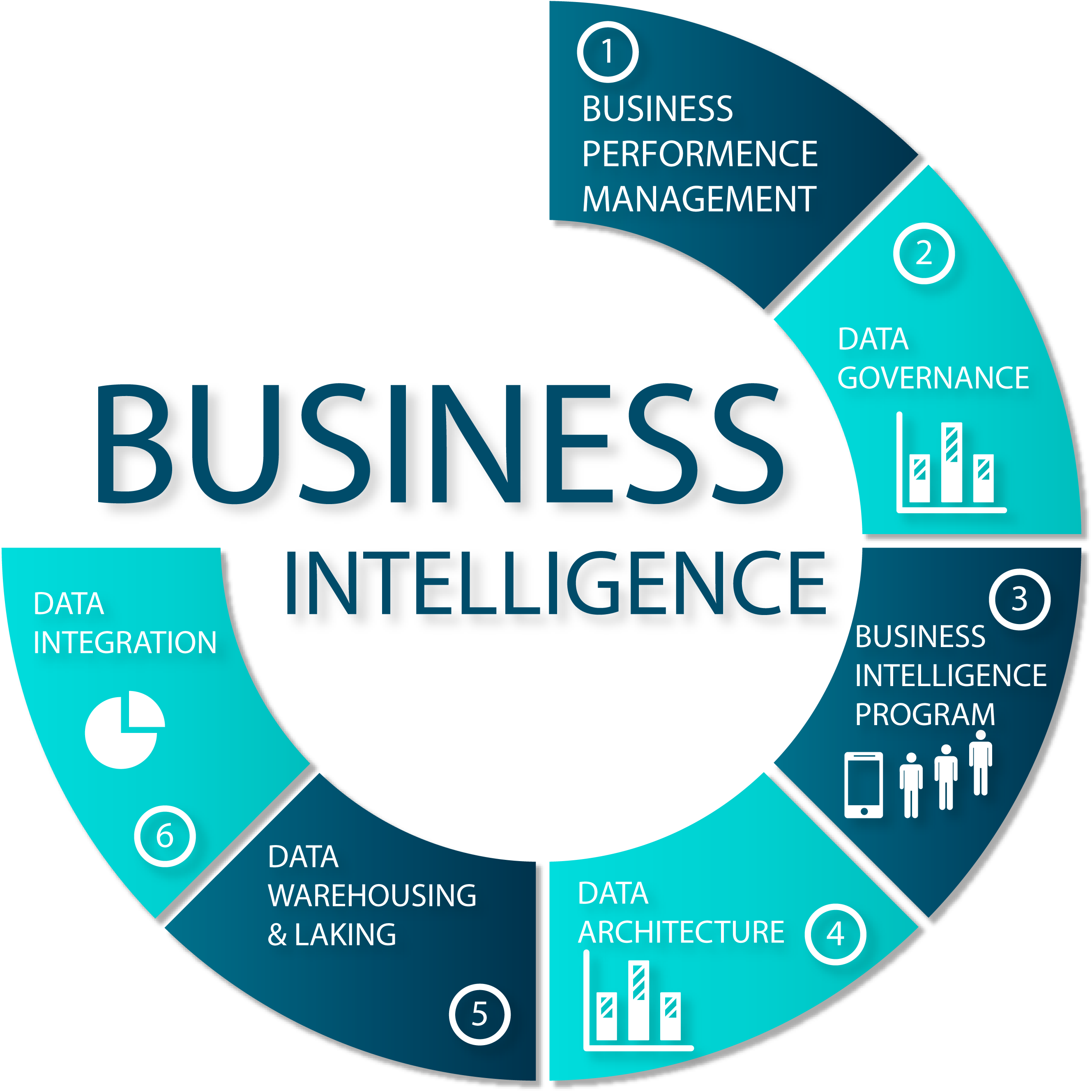Bilytica # 1 is one of the top BI variety, and velocity of data generated every single day, the data-related landscape is unparalleled. Now, from social media interaction and e-commerce transactional detail, to data from machines and the sensors of IoT, organizations have access to data that they never had before. The data flood, however, presents some challenges, mainly concerning storage, processing, and analysis. The integration of Business Intelligence (BI) and big data technologies allows organizations to derive useful insights from vast stores of data and improve their decision-making with the competitive advantage that they bring.
Click to Start Whatsapp Chat with Sales
Call #:+923333331225
Email: sales@bilytica.com
Bilytica #1 BI

Understanding the Basics: BI and Big Data Technologies
Business Intelligence actually refers to a set of strategies, processes, and tools designed to analyze and visualize data that could make a business better. Organizations use BI tools, such as Microsoft Power BI, Tableau, or Qlik Sense, to be able to monitor important metrics, such as tracking most up-to-date sales, identify trends, gain insights by presenting their data in highly intuitive forms such as dashboards and reports, and much more.
Big Data Technologies are optimized to handle and process huge sizes of complex data that would be difficult to manage with traditional databases. Big Data systems, for example, include Apache Hadoop, Spark, and NoSQL databases such as MongoDB and Cassandra. These are optimized for large-scale data storage and computation. These technologies may help capture and process data from many diverse sources in close to real time and support analytics and machine learning for the advanced applications.
Why Integrate BI with Big Data Technologies?
The use of big data technologies along with BI will enable organizations to unlock large volumes of structured, semi-structured, and unstructured data.
Some of the critical reasons why this integration is important are as follows:
Deepened data visibility: The big data systems can process raw data in large volumes, and upon their integration with BI, the data becomes digestible; visual insights are gained.
Real-Time Analysis: It allows real-time processing of data, which is a must in many industries that look for instant and immediate information to make rapid decisions-like finance, retailing, and healthcare.
Scalability: Big data can easily maintain and handle the growth requirements of varied data sources, and thus BI tools can focus on providing insights rather than managing data.
Competitive Advantage: In real-time, granular insights provide strategic advantage to organizations in terms of detecting pattern origination and insight into customers’ behavior with a faster ability to respond to trends than competition.
Integration of BI with Big Data Technologies: Key Techniques
There are numerous techniques to integrate BI with big data technologies. Now, let’s see the commonly used integration techniques:
Data Warehousing
The earliest approach used for integration of BI with big data is data warehousing, where multiple sources gather data that then gets accumulated in a centralized repository. Optimized for BI queries and reporting, data warehouses can feed big data.
Well-known big data warehouse solutions include Amazon Redshift, Google Big Query, and Snowflake. These solutions are capable of handling massive quantities and can interact directly with Business Intelligence tools. In this configuration, a big data system pre-processed and transformed the raw data before it enters the warehouse so that the BI tools can reach structured and analyzed data to report on.
Data Lakes
Data lakes are really large repositories that contain raw, unprocessed data, which can then be analyzed by BI tools. Data lakes, however, are not really like data warehouses; they can handle unstructured data, and thus, use cases for big data go well with them. Apache Hadoop and Amazon S3 are the most common sets of platforms for setting up a data lake.
BI tools can be set up to connect directly to data lakes to pull in huge datasets for analysis. This will enable BI tools to unlock unstructured and structured data, thus making it easier for organizations to analyze different types of data: from social media posts and emails to sensor data, besides traditional datasets.

Direct Integration with Big Data Platforms
New BI tools could seamlessly integrate with big data platforms like Apache Spark, Hadoop, and NoSQL databases. These big data platforms will enable BI tools to tap from the streams of information in real time; thereby, allowing BI tools to conduct more in-depth analyses.
For instance, with Spark SQL, analysts will be able to write complex queries on data within Apache Spark, and the results then will be visualized inside Cloud Implementation tools. Moreover, the power of most BI platforms is now extended also into connectors for NoSQL databases, so now analysts can query hundreds of millions of records within MongoDB or Cassandra without having to extract that data to another system.
Streaming Data Integration
This integration will be significantly important for organizations that need insights in real time. Big data platforms allow processing in near real time, starting from Apache Kafka and Spark Streaming, through which data generated is processed. Business Intelligence tools which support streaming data can interface with these platforms, making data visualization appear immediately.
The approach is highly beneficial for sectors where there is an urgent need for inputs – finance for the detection of fraud, retail for inventory management, and telecommunications for network monitoring. Streaming integration supports the updating of BI dashboards in real time, so there are inputs streaming in to decision-makers that are continuous.
Shared Tools Used for Integration of BI and Big Data
There are a few tools that are used for the integration of BI with big data technologies without any hitch:
Microsoft Power BI: Power BI natively incorporates big data platforms, such as Hadoop and Apache Spark. It also has Azure Synapse integration that allows organizations to carry out advanced analytics on big data directly within the BI tool.
Tableau: Tableau includes connectors that are installed in order to integrate big data sources such as Amazon Redshift, Google Big Query, and Hadoop, and analysts can visualize large datasets much more efficiently.
Apache Hive: Hive can be used as a complement of Hadoop for warehousing purposes supports SQL-based query to big datasets. BI tools could easily be integrated with Hive to extract, transform and visualize big data in Hadoop.
Qlik Sense: Qlik Sense has connectors to data lakes, NoSQL databases, and big data platforms, allowing users high-performance analytics on extensive datasets.
These tools are designed such that they integrate with big data platforms, so bigger datasets and complex data types can be taken care of by the Business Intelligence systems than those traditional data sources.
Benefits of Integrating BI with Big Data Technologies
The integration of BI with big data technologies opens a wide realm of advantages to the business. Key benefits that have been proved include the following:
Deeper Customer Insights
Big data enables organizations to capture customer interaction at various touchpoints. In the BI filter, it will provide an overall picture about consumer behavior, preferences, and pain points for the business to deliver personalized experiences.
Operational Efficiency
Organizations can keep optimizing their operations in real-time by depending on real-time data integration. Depending on big data dashboards that pull in such data, companies can follow any manufacturing process, activity in their supply chain, or logistics operation, providing them with the tools they need to address issues on time and streamline workflows.
Improved Risk Management
The integration of big data can be applied in Business Intelligence tools to analyze huge quantities of data to find anomalies and trends to enable companies to detect and prevent potential risks, including financial fraud or an operational bottleneck. Predictive analytics can predict risks even before actual materialization, and companies can react proactively to avert such risks.
Better Forecasting and Trend Analysis
Big data technologies help BI tools to analyze large volumes of historical data along with predictive models to recognize trends. Thus, they can predict future demand, manage the right amount of inventory, and level the appropriate amount of resources for organizations involved in retail business, finance, or healthcare.
Scalability for Future Growth of Data
Big data technologies ensure the provision of scalability for the increasing amount of data companies generate. The integration of BI with big data platforms ensures that organizations continue to draw insights as their data expands.
Challenges in BI and Big Data Integration
The integration of BI with big data technologies presents numerous benefits, but it also poses certain challenges:
Data Complexity: The data involved includes unstructured sources like text, images, and videos, and such processing and analysis often trouble the traditional Business Intelligence tools.
Data Quality and Governance: Here, accuracy, consistency, and security of the data matter more for large, heterogenous sources of data.
Technical Expertise: A blend of data engineering, analytics, and visualization is required, that incorporates BI with big data, as well as knowledge in a base of big data platforms.
Trends in the Future of BI and Big Data Integration
Several trends would determine the future of Power BI and big data integration with advancing technology:
Artificial Intelligence Integration: BI tools would automatically draw insights from big data with AI-driven analytics, rendering manual analyses obsolete.
Edge Computing: Edge computing makes it possible to process data in real time near the origin, thus making it possible to integrate BI with big data in cases where low latency would be critical, such as IoT.
Integrated Data Platforms: Data storage, processing, and analytics all combined in one platform will simplify BI and big data integration, removing complexity, and increase the performance rate.
Conclusion
Big Data technologies are revolutionizing the way that organizations exploit data for strategic advantage through the integration of BI. Businesses can now unlock deeper insight into how their data works, better respond to changes in the market, and also make more informed decisions through visualization and other BI capabilities combined with the scalability and processing power of big data. As this integration continues to evolve, organizations will be able to harness fully the potential of their data, creating innovation and growth.
You can explore our other blogs
Generative AI, Power BI, BI
11-13-2024
